In the most basic terms, your job as a painter is to fill a canvas from top to bottom, edge to edge. Sometimes you might leave some canvas exposed here or there, but in general, you are here to cram some paint (it must be beautifully and thoughtfully crammed on there, of course) into a rectangle or a square.
In fact, one of the first exercises I do in any beginner class is to have the painter take an object or two and just fill a page with silhouettes of them. This is a way to show a new painter that this cramming of imagery and brushmarks is the job and that the job doesn’t have to be that intimidating.
If you are painting something representational, like a landscape, portrait or still life, then you have the second task of creating depth. That need for depth gives you a second job of filling a second kind of space, the space traveling from front to back, the foreground, middle ground and background.
The question of how to fill those two spaces in a way that creates a dynamic, engaging work of art brings us back to the core challenge of being a painter, which is to make a series of smart decisions.
The decisions you face regarding filling the space are many so let’s break some of them down. By asking yourself a few questions as you go along you can more easily and successfully fill that canvas from top to bottom and from foreground to background.
QUESTIONS TO ASK YOURSELF WHEN FILLING THE CANVAS EDGE TO EDGE, TOP TO BOTTOM
Do I want to create a symmetrical composition or an asymmetrical composition?
Symmetry is creating balance by having the two sides of your painting be basically the same. It is when you could fold your canvas in half and both sides would be somewhat similar. Asymmetrical means that a lot of the focus of your painting exists on one side of your painting. There is beauty to be found in both types of compositions.
Many famous paintings are famous partially because they successfully leveraged the power of these two compositions to create an engaging composition.
Leonardo used the power of symmetry to give us an iconic take on a Biblical moment.
Hokusai was no slouch either, and his masterpiece woodblock and source of so many terrible knock offs (and some totally awesome ones), The Great Wave off Kanagawa, proves the power of an asymmetrical composition.
Hokusai, The Great Wave off Kanagawa
Do I want to create a point of focus in your piece or use a mosaic pattern?
Painter Brice Marden approached painting as a way to bring a viewer around the canvas with him, his marks force our eyes to meander and dart, swirl and drop as we travel with his colorful lines. His mosiac patterns do not offer our eyes a single place to rest.
Brice Marden, Event
Caspar David Friedrich, Monk by the Sea
But in Caspar David Friedrich’s Monk by the Sea there is only one place your eyes are going to go - to the sad, lonely, contemplative monk facing that ocean and its terrifying reminder of time and mortality on his own. (I might be projecting here…)
If you do want a focal point or a non-mosaic type of composition, then we turn to some of the tricks that allow us to direct the eye of the viewer. One of the most reliable (and easiest to learn) is the Rule of Thirds.
You break your painting into 9 squares. If you place the focal point of your painting at any of the 4 line intersections that result, you increase the odds that the viewer’s eyes will go there.
You can also create a focal point by strategically organizing the objects in your painting. Use the power of shape, and the directional aspects of those shapes, to direct the eye. The teapot’s spout and and bird’s beak below are examples of parts of an object that are built to be leveraged for direction.
Am I using light and shadow enough to direct the eye?
There is a real power in manipulating light and shadow. You can create one very light bit on your canvas where you want the eye to go and surround it in a sea of darkness a la Caravaggio and his use of chiaroscuro, another term for the high contrast between light and dark.
QUESTIONS TO ASK YOURSELF WHEN FILLING A CANVAS FROM FOREGROUND TO BACKGROUND
Am I using enough of the tricks I have at my disposal to create depth?
There are a lot of tricks related to creating depth that leverage the way we view the world in real life and apply them to painting. These tricks are especially helpful if you are doing a landscape.
Have your colors move from warm to cool or cool to warm, or light to dark or dark to light.
Put the largest items in front and smallest in back. And those larger items in front should have more details and we should lose details as we travel back in space - just as our eyes see the world in real life.
Zig zags and diagonals move the eyes back.
Add a narrowing path or road to bring the eye back into the painting.
And, of course you could use perspective drawing where you use geometry to move back in space.
Now go get that fresh, empty, terrifying and exciting canvas and start to fill your space!
Coming up at The Painting School Brooklyn (if another instructor isn’t listed, I’m the instructor) :
Welcome to Watercolor with Jodie Niss - Starting March 21st
Flower Painting Workshop - Saturday, March 23rd 1-4
Color Theory Workshop - Sunday, March 24th, 1-4
Free Senior Art Morning! Thursday, March 21st. 9:30-11:30- Join us for donuts and muffins and I’ll be there to teach you how to paint if you want. It is free and all art supplies provided.
Paint & Sip Fundraiser for Red Hook Art Project, March 22nd - 6-8
Whiskey + Painting 101 - Wed. April 3rd, 7-9
Abstract Painting workshop - April 6th, 1-4
Collage Workshop with James Gallagher, April 7th, 1-4
And stay tuned for an upcoming virtual class. I just need to Google “How do you do a virtual class?” first….
Have a great weekend and Happy Painting!
Sara

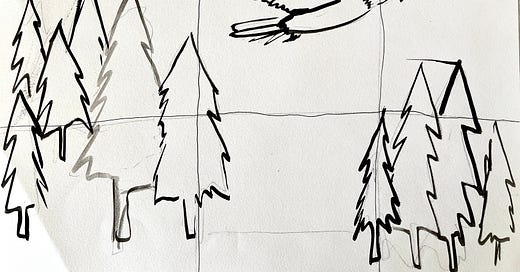


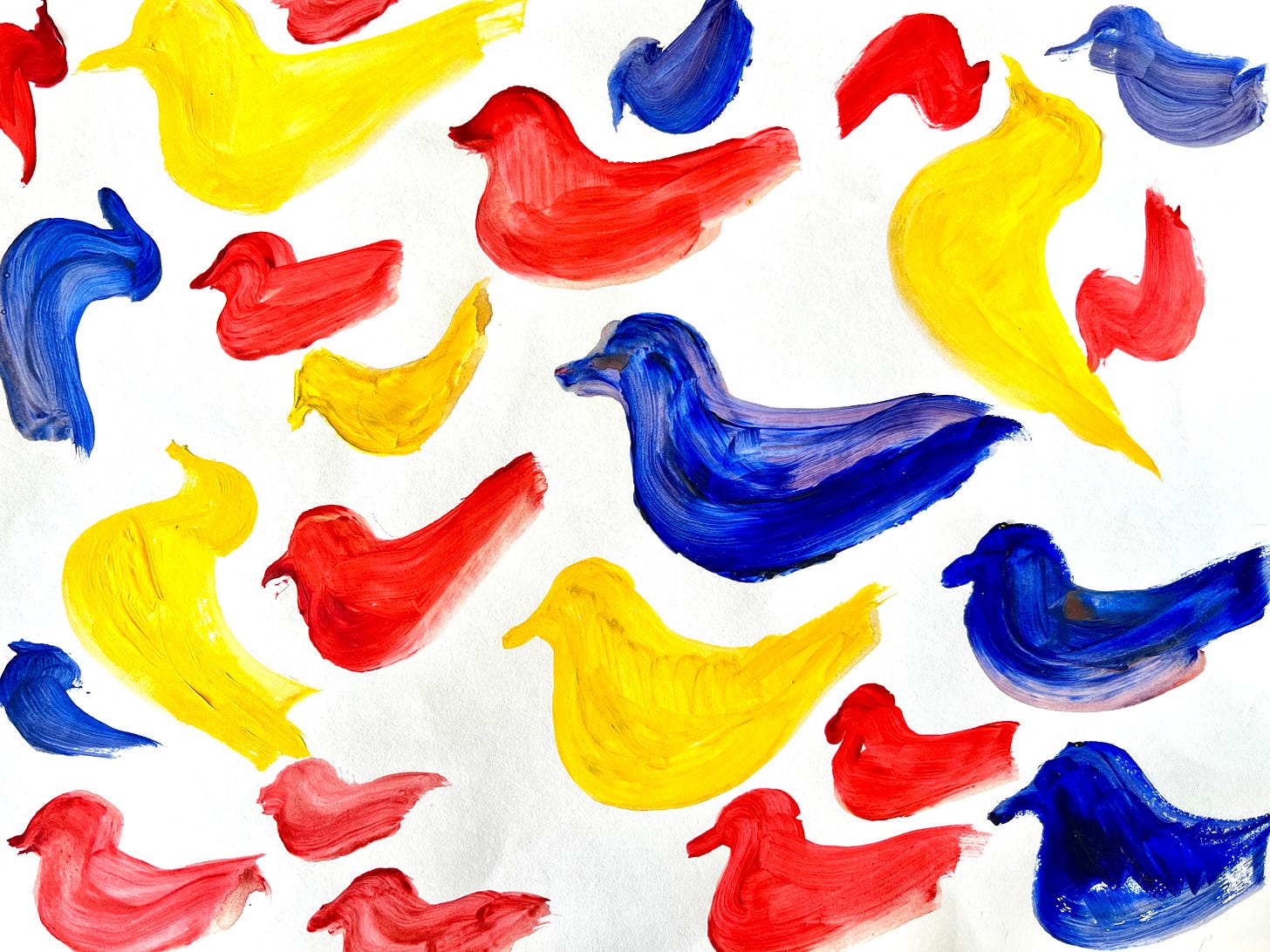

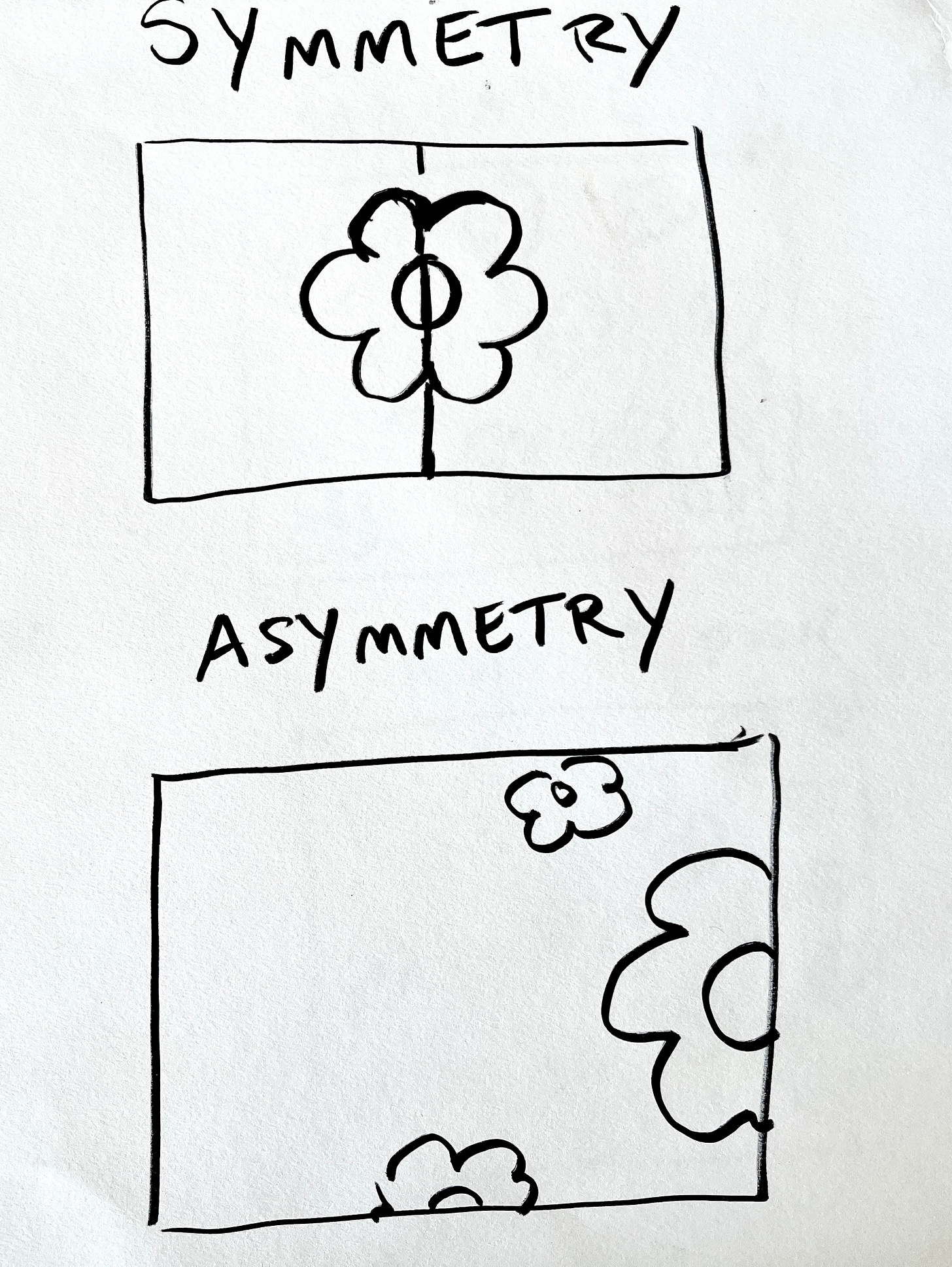

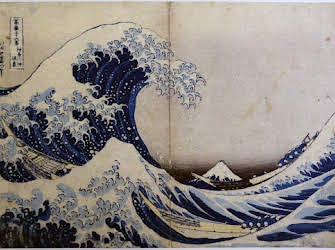
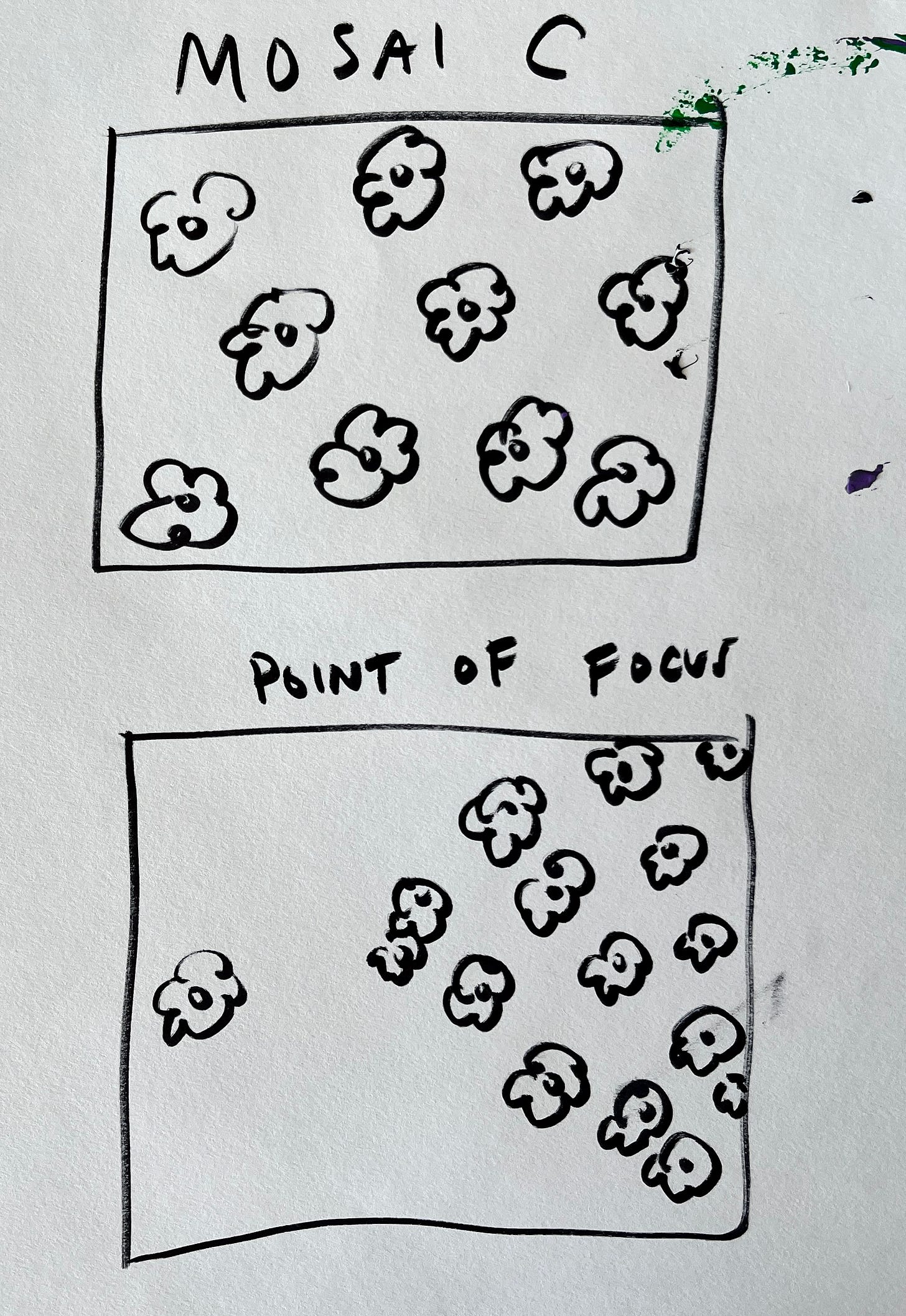

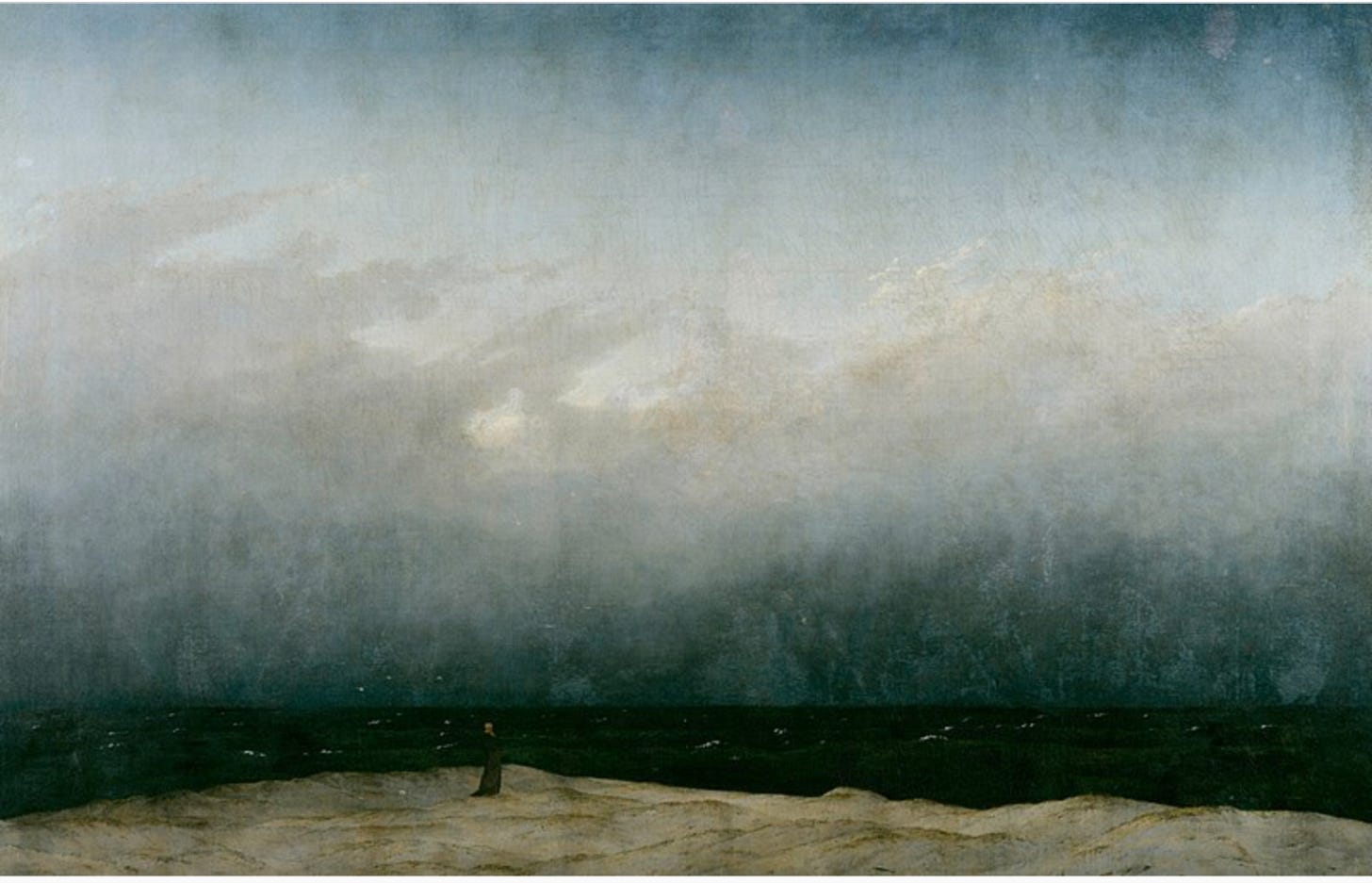

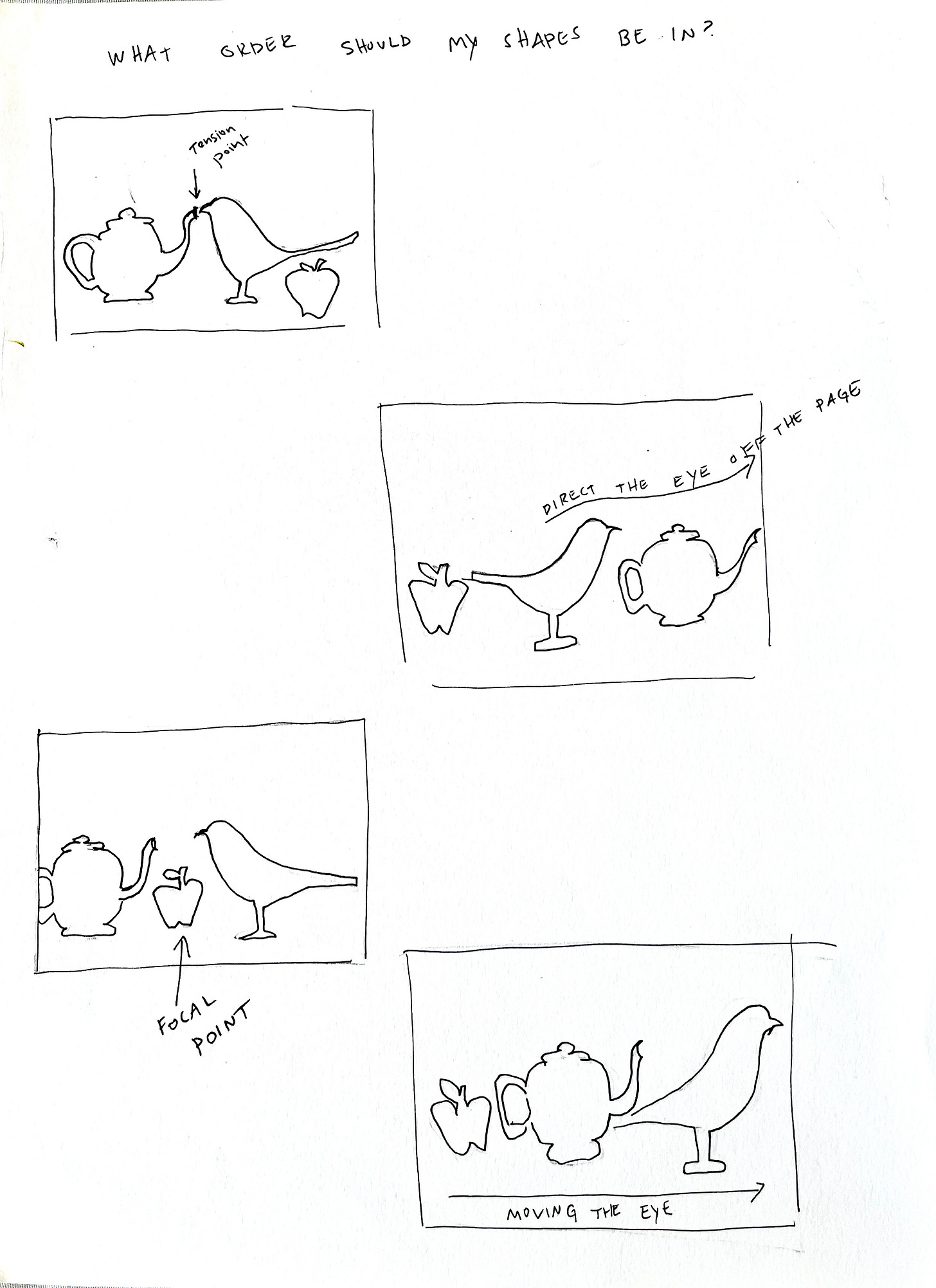
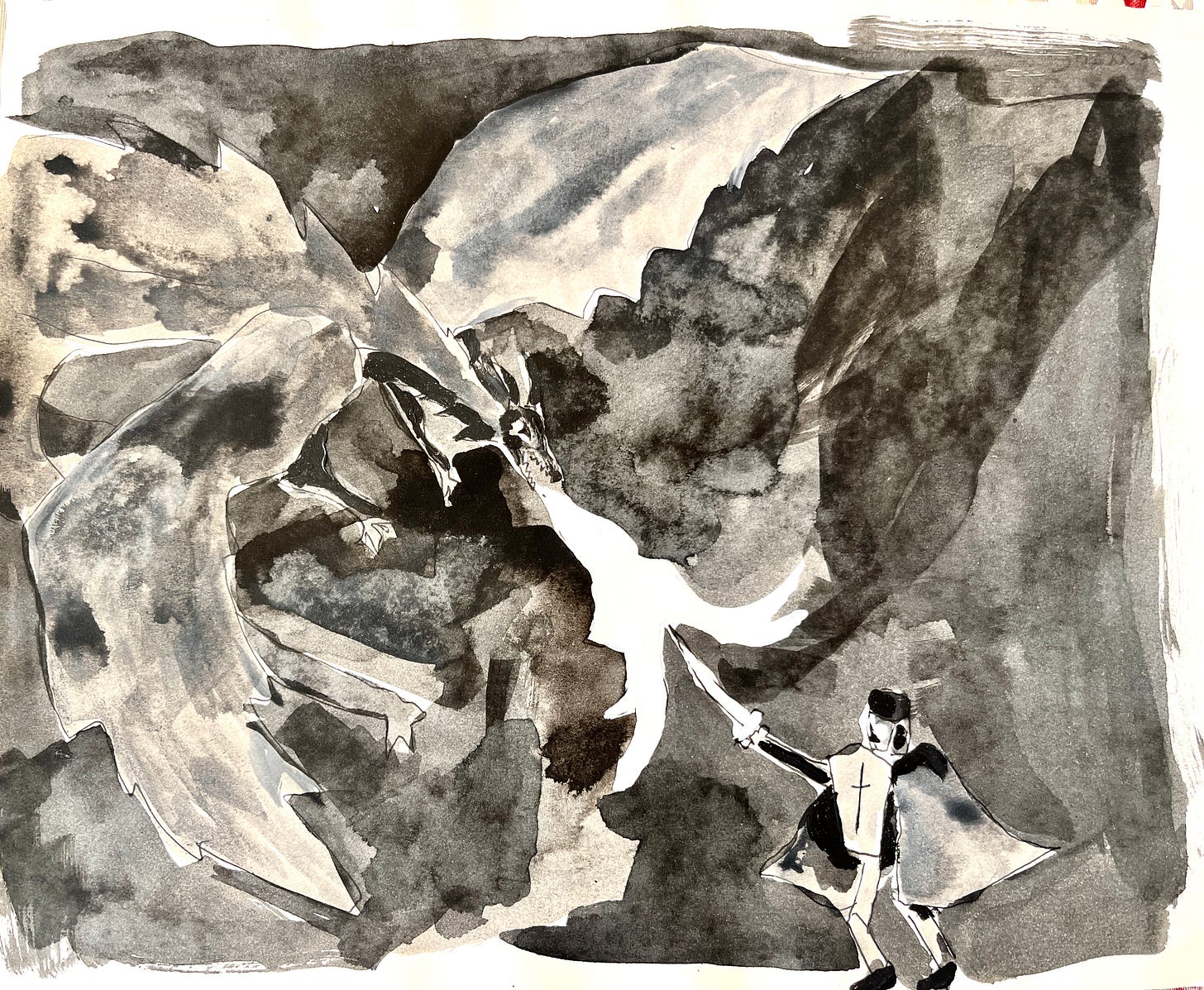
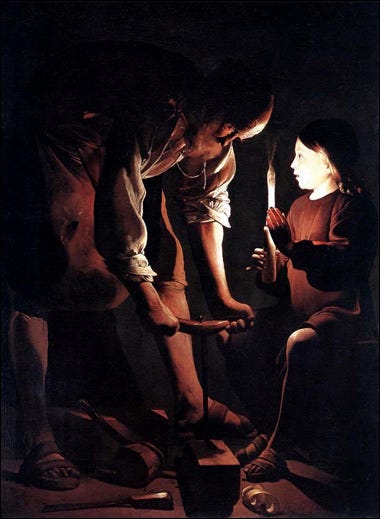
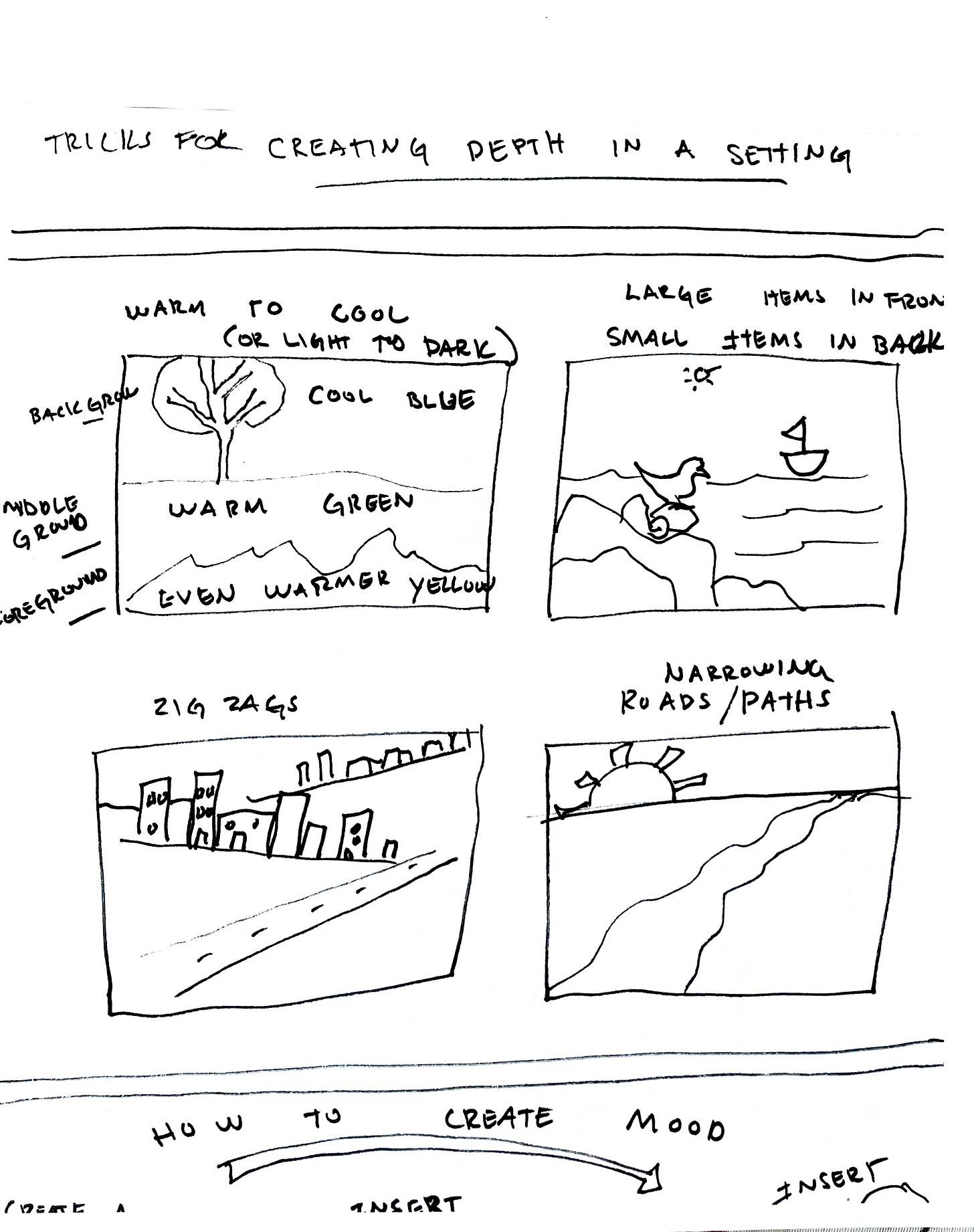
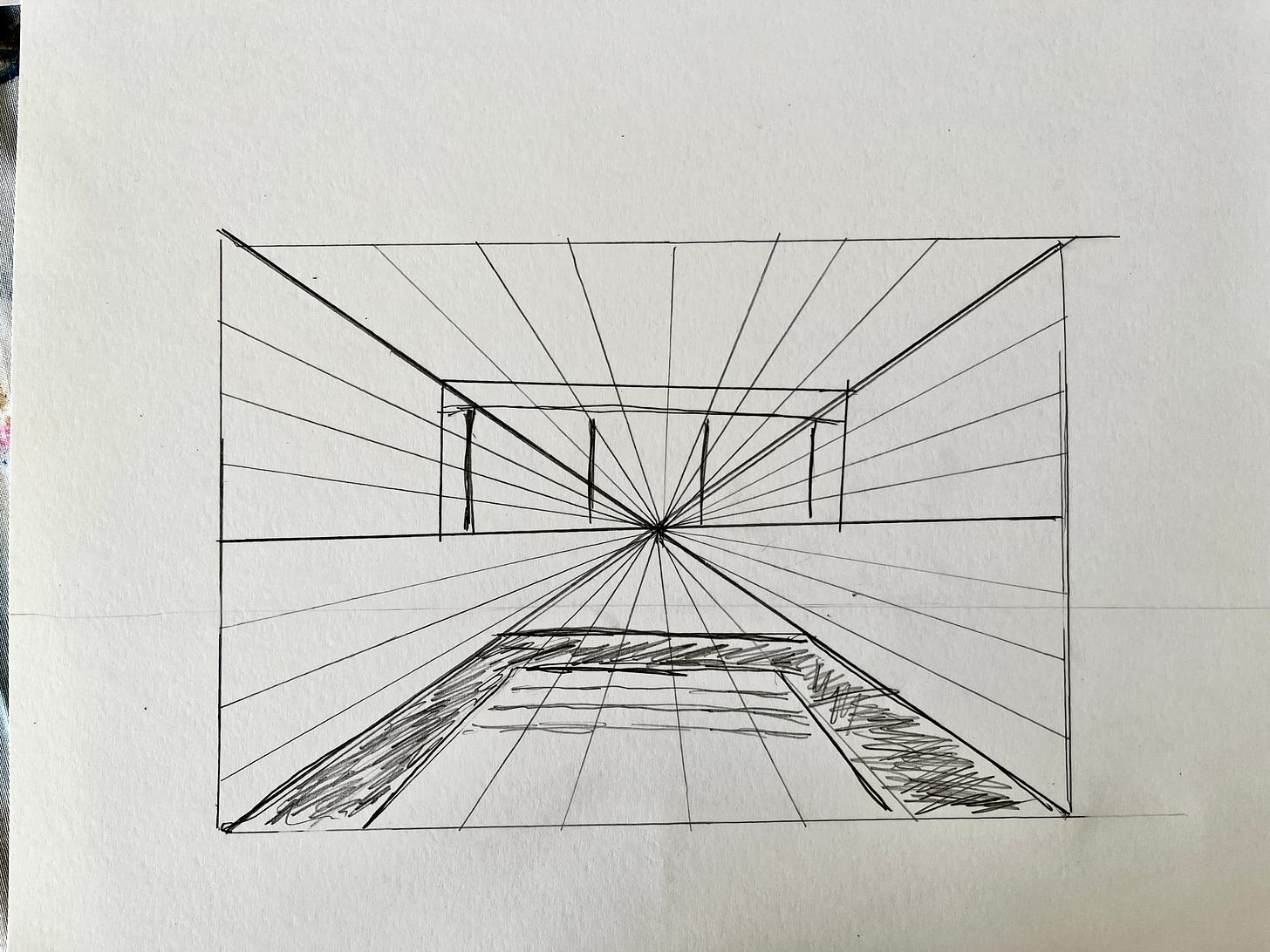
Well done! Thank you! So many good reminders and strategies presented clearly and simply. All love!
I learned so much from this essay. Thank you! Putting a class on my calendar — maybe abstract painting? 🌞